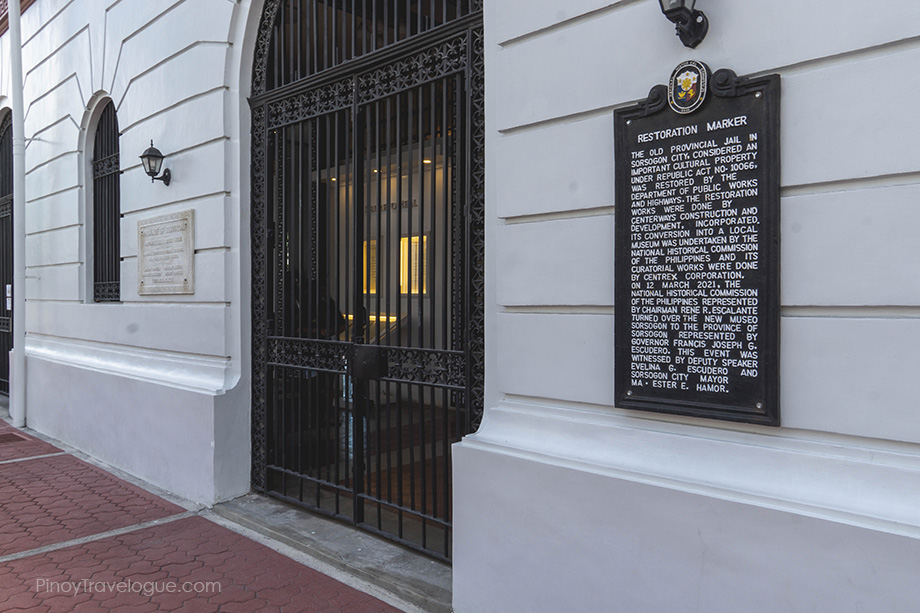 |
Museo Sorsogon is a relatively new tourist spot. It made rounds on the internet last year with the news of its inauguration—when the National Historical Commission of the Philippines (NHCP), who handled the curatorial development, turned over the museum to the provincial government of Sorsogon. It garnered the netizens' attention presumably because of the museum building's visually appealing colonial period architecture.
Museo Sorsogon was the old provincial jail and courthouse located at the back of Sorsogon's capitol building. The Public Works department (DPWH) restored the erstwhile detention facility of early 1900s structure as part of its conversion into a local museum that opened doors to the public on March 2021.
 |
| The capitol building and the provincial jail | via Museo Sorsogon's Facebook page |
Like many museums around the country dedicated to a specific township, the 10 galleries of Museo Sorsogon exhibit facts and figures about the province; historical items and narratives on how Sorsogon was like when the country was under the Spanish, American and Japanese governments; brief stories about the lives of famous Sorsoganons; and how the province positions itself in the present, i.e., the festivals, tourist spots and its local products.
At the museum's foyer, guests are welcomed by the glass framed Decreto Real, the document that established the province in 1894, and a sizeable political map plastered on the wall showing Sorsogon's towns and legislative districts. A gigantic, decrepit anchor found in an astillero (shipyard) in Donsol is also on display, apparently because it is so unwieldy that it needed the foyer's adequate floor space and high ceiling. Next to it, leading to the galleries, is a hallway lined with sequential portraits of the former provincial governors.
READ ALSO: Whale Shark Encounters in Donsol
 |
The first two galleries feature Sorsogon's geography and culture: its municipalities and corresponding population count, its climate and the agricultural crops and production that depends on it, its people, the dialects they speak, and local folklores such as the legend of the famed Bulusan Lake.
READ ALSO: At Peace in Bulusan Lake
Galleries 3 and 4 narrate how the Spanish colonial regime shaped Sorsogon and how, at the tail end of that 333-year rule, the Philippine Revolution had unfolded in the province. The fifth gallery is about the early armed resistance against the Americans and the progress brought by these eventual colonizers, up to the time when they granted sovereignty via the Commonwealth Government.
 |
| Sorsogon during the Spanish era |
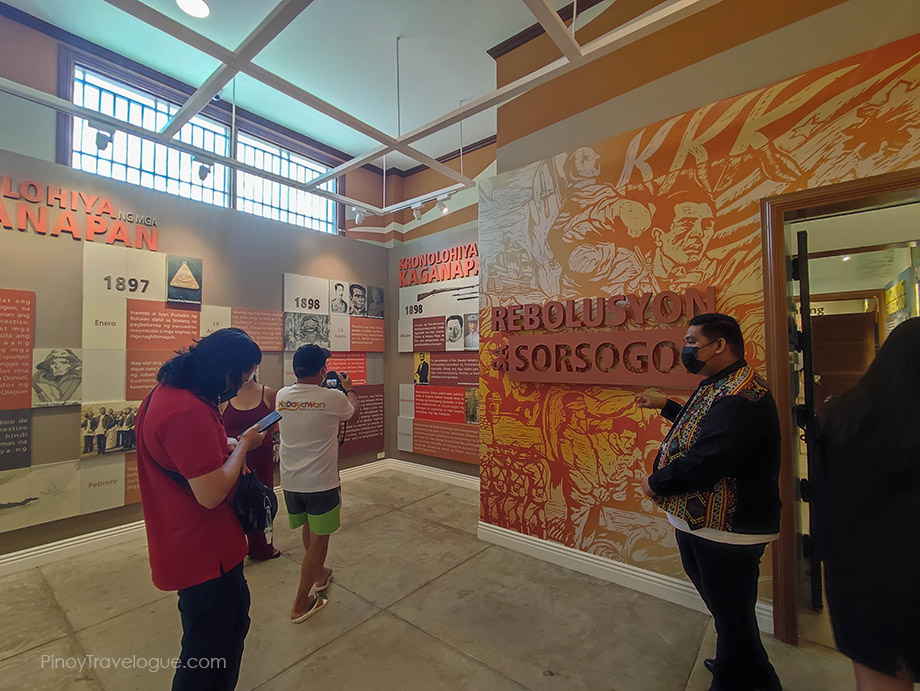 |
| Sorsogon during the Philippine Revolution |
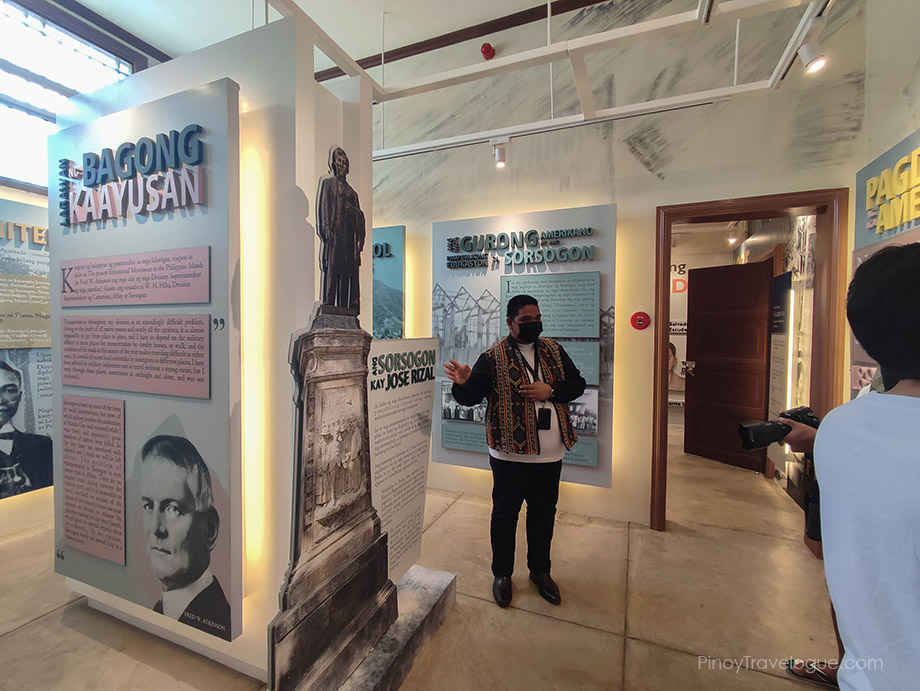 |
| Sorsogon during the American period |
 |
| Sorsogon against the Americans |
 |
| Restored weapons from the Japanese period displayed inside a bartolina |
Gallery 6, which continues to the second floor, features Sorsogon during World War II and the Japanese occupation. There, visitors will learn about some familiar Bicolano heroes such as Wenceslao Vinzons (of Camarines Norte) and Salvador Escudero, who, among others, both commanded guerilla units during the invasion.
Post-war Sorsogon is in the seventh gallery. Next to Sorsogon's road to recovery from the damages of war, the gallery then covers the disasters that Sorsoganons had to endure—catastrophic storms that hit and the eruptions of the iconic Mount Bulusan which, a few weeks after our trip, had shown volcanic unrest and spewed colossal ash columns, the ash fall affecting the residents from the surrounding towns.
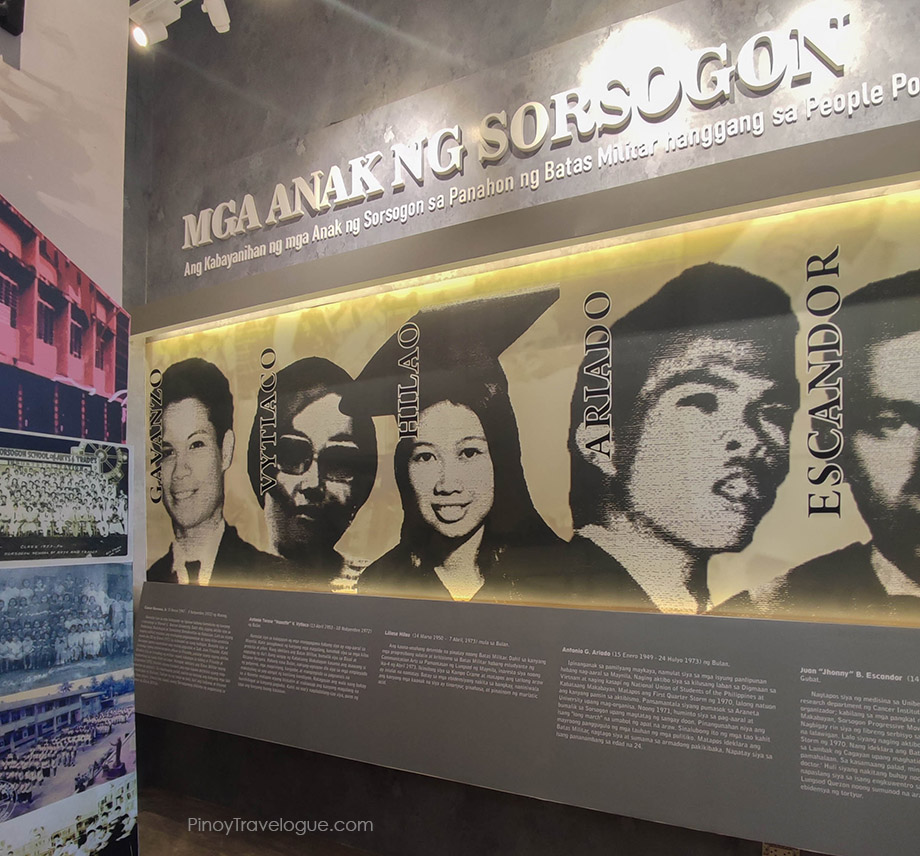 |
| Famous Sorsoganons from the Martial Law era |
Also in Gallery 7 are the famous Sorsoganons who displayed heroic mettle during the Martial Law years (yet another dark chapter) including Liliosa Hilao, the 23-year old student journalist who was arrested, raped and viciously tortured while detained. She is widely known as the first detainee to be killed during the military regime of the elder Marcos.
The eighth exhibit showcases Sorsogon's main industries. On display are decorative and utilitarian items made from pili nut shells, abaca fibers, niyog (coconut shells) and some tools produced by the blacksmiths of Sorsogon City.
 |
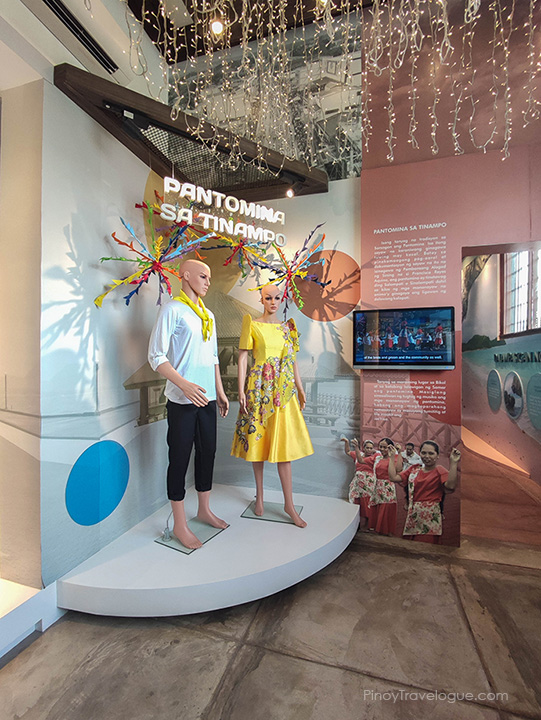 |
| Pantomina sa Tinampo |
Gallery 9 highlights Pantomina sa Tinampo, Sorsogon's traditional love and courtship dance. During Sorsogon's 125th anniversary celebration in 2019, the province bagged the Guinness World Record for the "Largest Filipino Folk Dance" when 7,127 people from all over the province performed the Pantomina along the lengthy Rompeolas Baywalk.
Finally, the tenth gallery, which exhibits replicas and stories behind Sorsogon's natural and historical tourist gems.
READ ALSO: A Calming Afternoon Cruise Along Buhatan River
Each gallery is housed in what was once a prison cell. What's left of the interiors of the former jailhouse are the cell doors that are now glass-paneled, a bartolina (solitary confinement cell) where some restored weapons used during the guerilla period are now displayed, and some murals like the one painted by inmate members of the Sigue Sigue Sputnik Gang on the staircase wall and the Iustitia mural that backdropped the courthouse on the second floor, part of Gallery 8.
The prison yard where the inmates used to work, exercise and spend their downtimes was converted into an amphitheater with two coffee shops on the corners.
 |
| Restored "Iustitia" mural |
 |
| Restored Sigue Sigue Sputnik Gang mural |
 |
| Prison yard turned into an amphitheater | via Museo Sorsogon's Facebook page |
Every inch of Museo Sorsogon is a learning nook. It is one of the museums I visited that are full to the brim with bits and pieces of knowledge. Museo Sorsogon provides a window to Sorsogon's storied past and gives a glimpse of what the province has to offer to its vacationing visitors—enough reason to pay a visit when you are exploring Luzon's southernmost province.
Museo Sorsogon
Address: Sorsogon Provincial Capitol, Sorsogon City, Sorsogon
Visiting Hours: Tuesday-Sunday, 8:30 AM - 12:00 NN / 1:00 PM - 5:30 PM
Contact (for booking and inquiries): museo@sorsogon.gov.ph
Facebook: Museo Sorsogon (official page)


